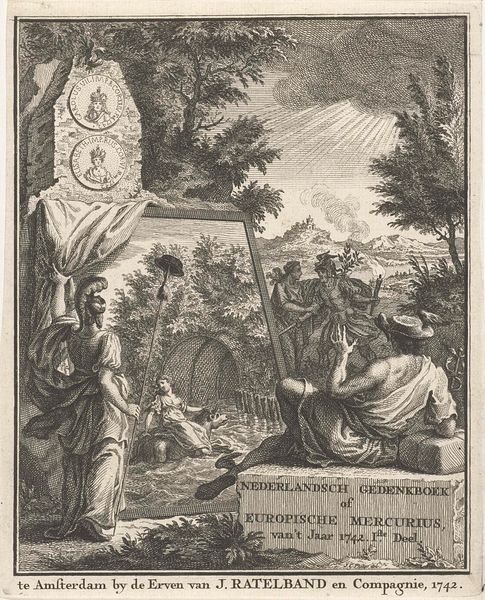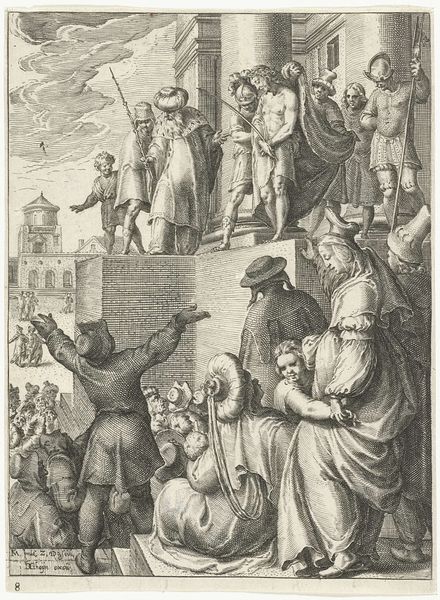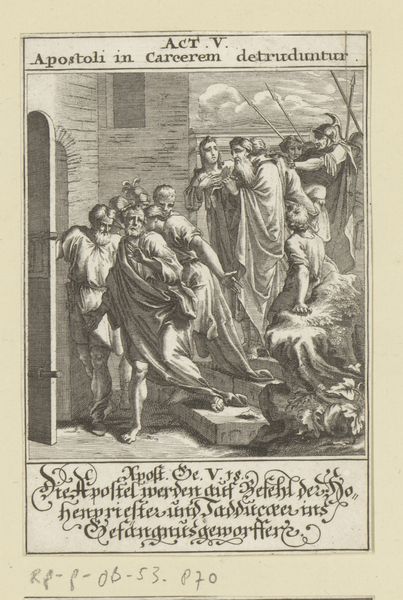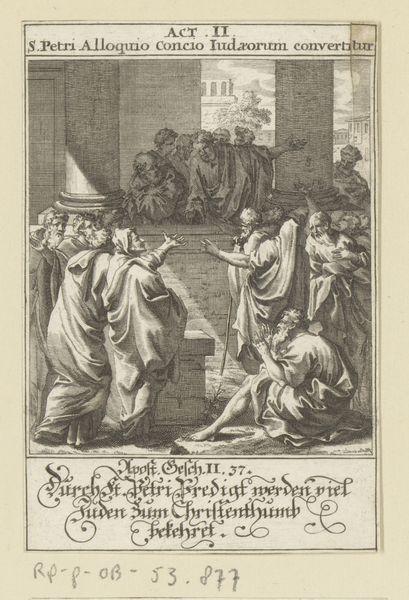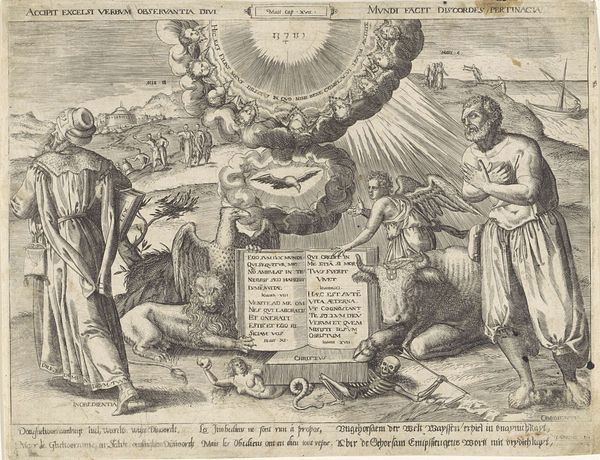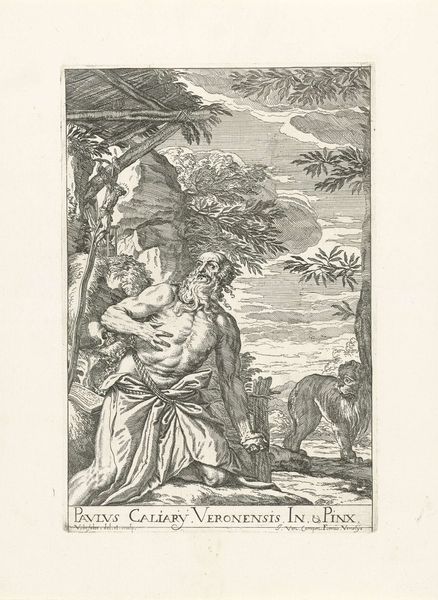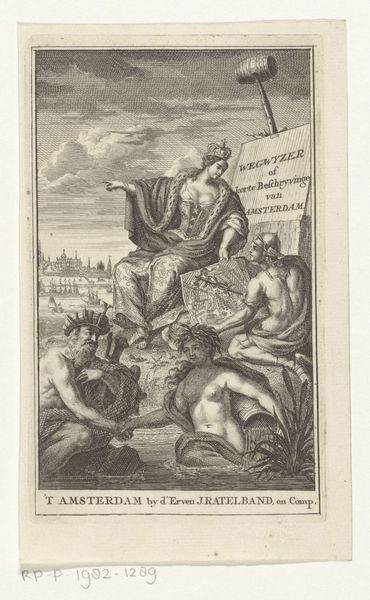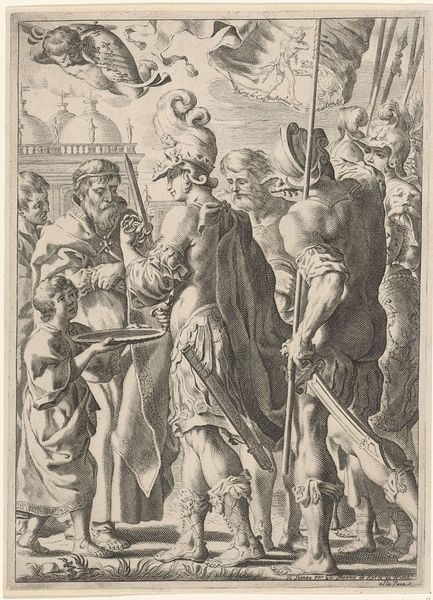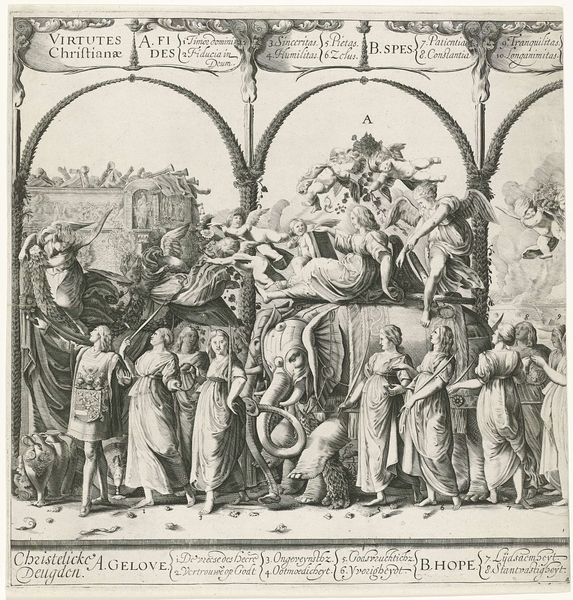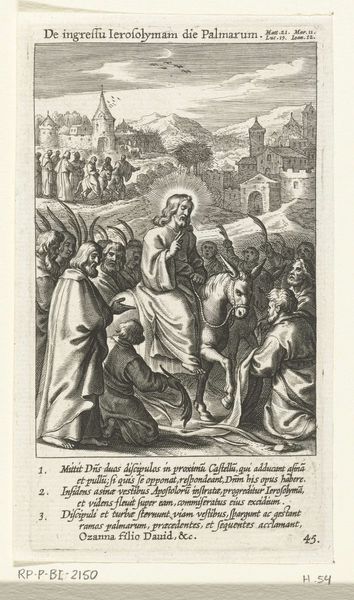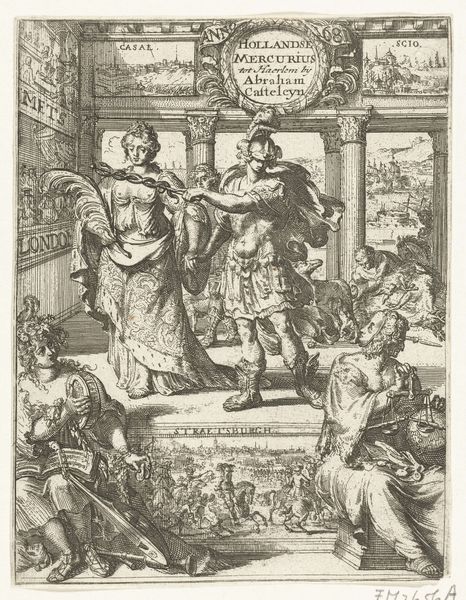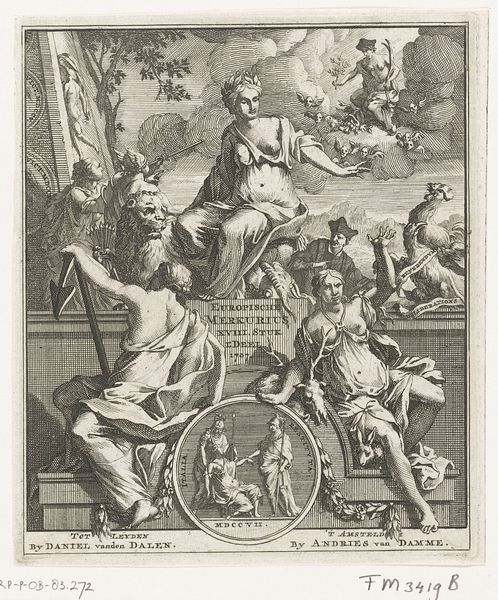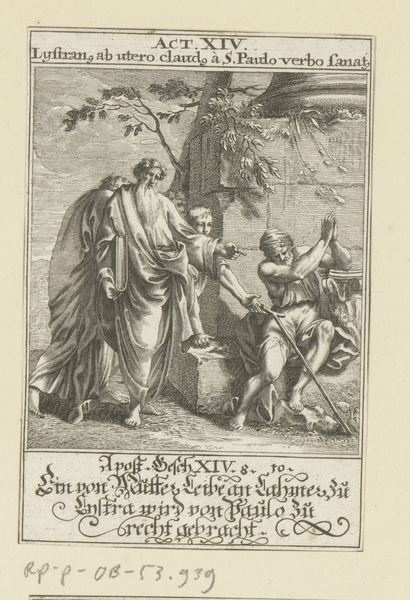
print, engraving
#
allegory
#
narrative-art
#
baroque
# print
#
landscape
#
cityscape
#
history-painting
#
engraving
Dimensions: width 80 mm, height 138 mm
Copyright: Rijks Museum: Open Domain
Curator: Let's turn our attention to this engraving by Jan Goeree, dating from 1708. It's entitled "Geschiedenis onthult de wereld," which translates to "History unveils the world." It's currently held here at the Rijksmuseum. Editor: The piece strikes me as crowded, almost overwhelmingly so, with this strange blend of figures and landscapes fighting for space. There’s something unsettling in that juxtaposition. Curator: Indeed, the Baroque style often embraced complexity. This print serves as the frontispiece to a book, so it functions almost as a thesis statement. Notice how figures representing different cultures and eras are gathered around a central globe, presumably being unveiled. The print itself became an allegorical method to convey complex meaning through accessible imageries. Editor: Allegorical, certainly, but with a distinct colonial gaze. Look at the romanticized depiction of the Indigenous person juxtaposed against the European figures at the top, seemingly presiding over some great historical narrative. There’s a power dynamic encoded in this composition, even through the technique of engraving. Curator: That's a sharp observation. The printing process and the choice to use allegory were certainly tools employed within specific socio-political contexts. Consider the parrot too, an exotic element indicating Dutch overseas territories. This work not only reflects an era of exploration but also reinforces Dutch dominance and expansion. Editor: Right. It’s also revealing that "history" here is actively unveiling – as though some histories need to be uncovered to the Westernized gaze while other cultures and people appear as relics trapped inside. So the engraving becomes a method for legitimizing Eurocentric history and colonial projects. Curator: Absolutely. What we consider history, what's valued as historically significant, has always been shaped by prevailing ideologies and political motivations. Examining those frames is crucial. Editor: For me, works like this reveal the layered complexities of representation. While presenting itself as objective knowledge, the engraving inevitably exposes its own biases and the selective narratives of power.
Comments
No comments
Be the first to comment and join the conversation on the ultimate creative platform.
